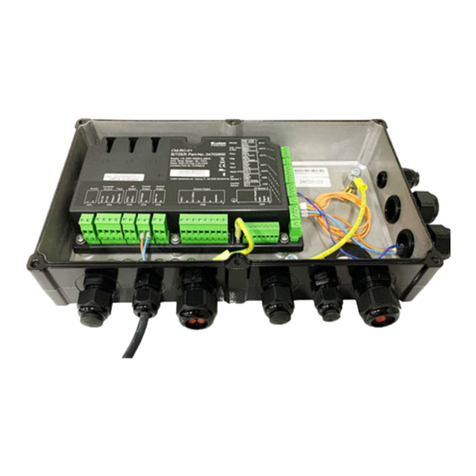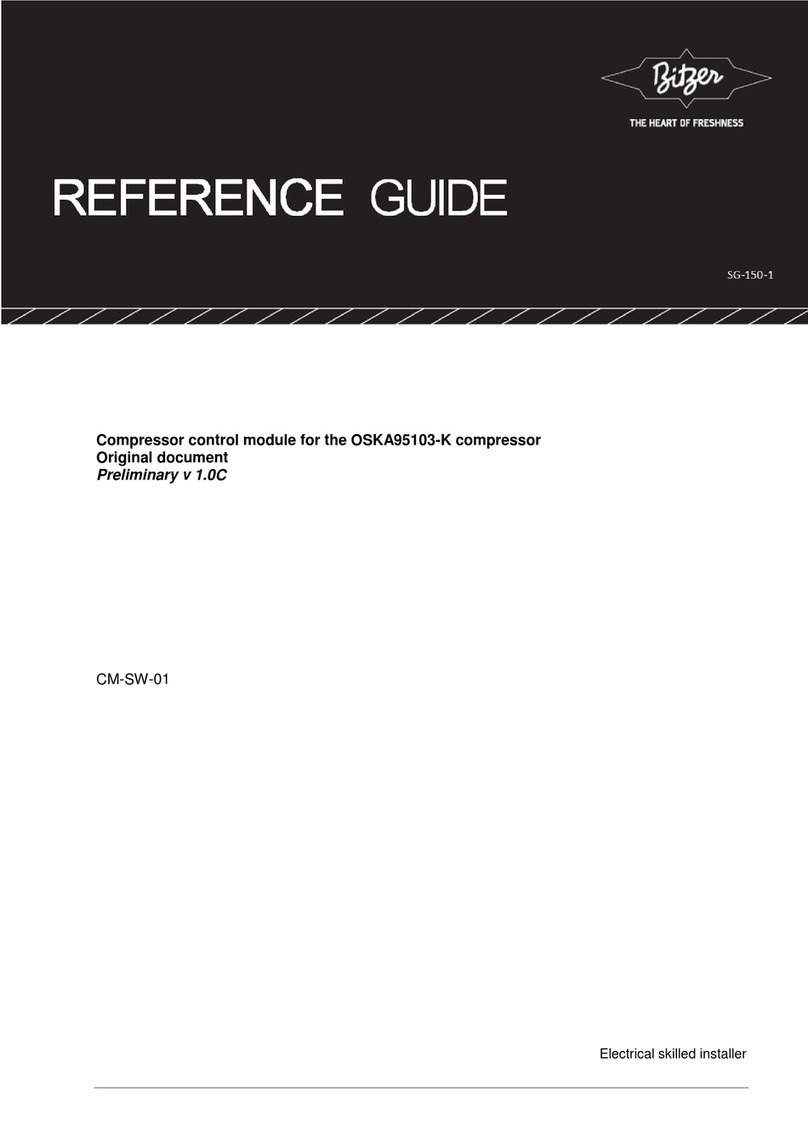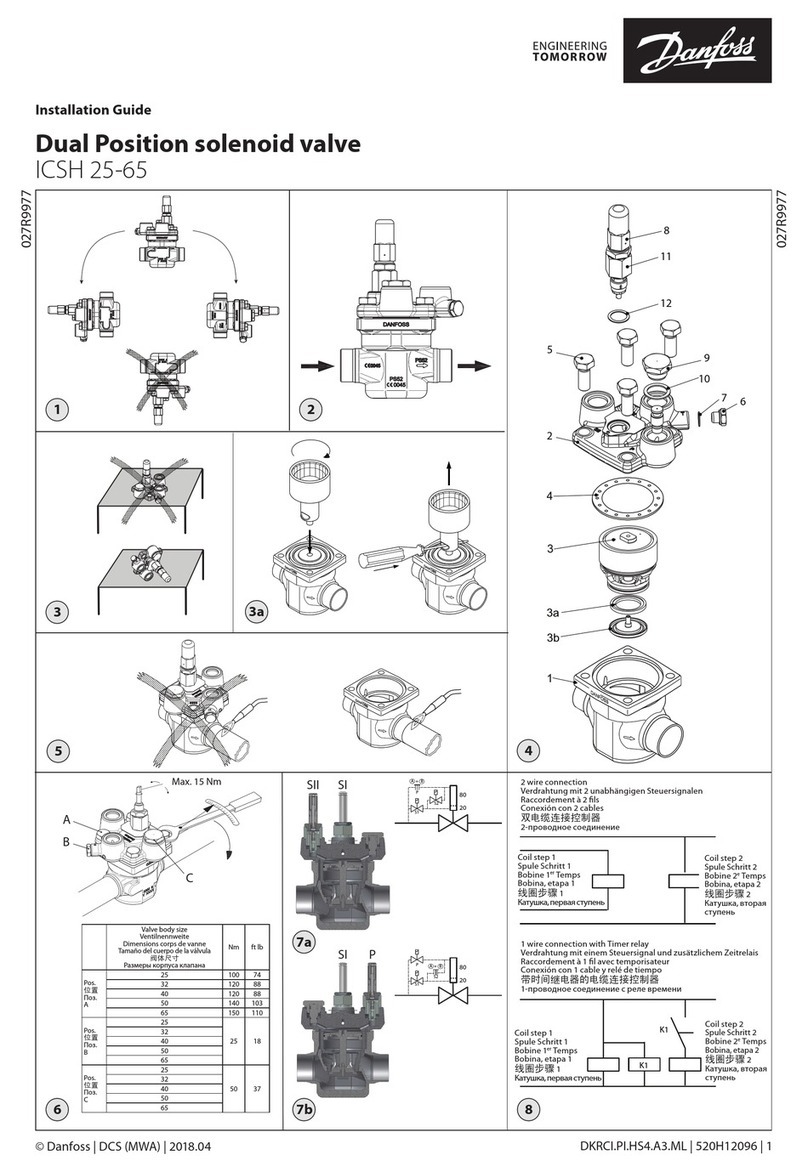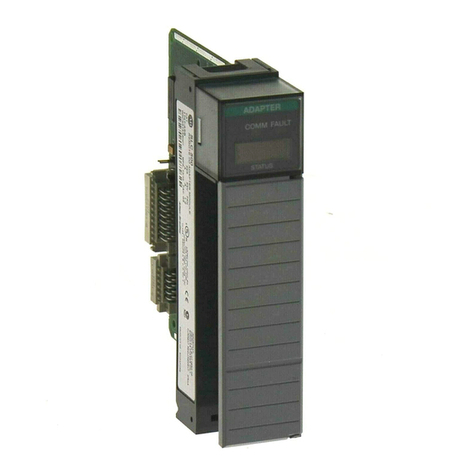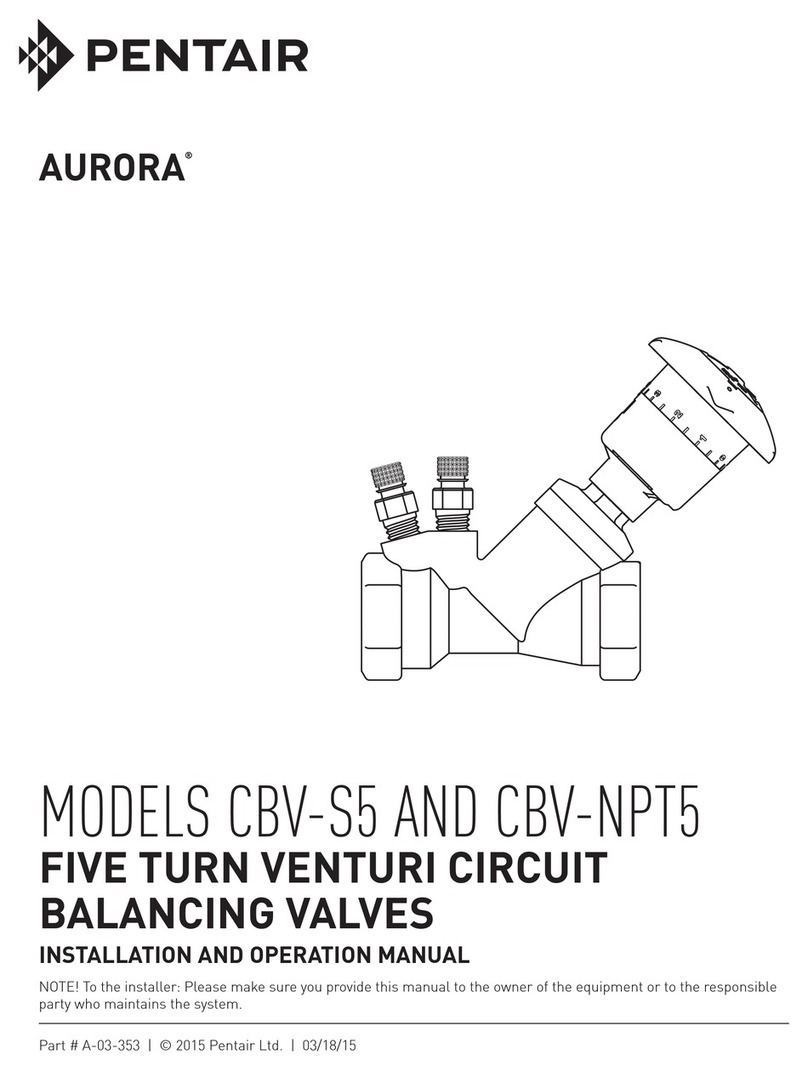Bitzer CM-RC-01 Technical specifications

KW-232-1
Instructions for mounting the CM-RC-01 add-on kit
Translation of the original document
English....................................................................................................................................................... 2
Anleitung zur Montage des CM-RC-01 Komplettierungsbausatzes
Originaldokument
Deutsch ..................................................................................................................................................... 18
Instructions de montage du kit complémentaire CM-RC-01
Traduction du document original
Français..................................................................................................................................................... 34
4VES-6Y .. 4NES-20(Y)
Installer
Monteur
Monteur

KW-232-12
Table of contents
1 Introduction............................................................................................................................................................3
2 Safety ....................................................................................................................................................................3
2.1 Also observe the following technical documents ...........................................................................................3
2.2 Authorized staff..............................................................................................................................................3
2.3 Residual risks ................................................................................................................................................3
2.4 Safety references...........................................................................................................................................3
2.4.1 General safety references.................................................................................................................. 3
3 Mounting the CM-RC-01 basic kit..........................................................................................................................4
3.1 Mounting the cable holders............................................................................................................................4
3.2 Removing the SE-B* motor protection device ...............................................................................................5
3.3 Connecting the oil heater...............................................................................................................................6
3.4 Mounting the discharge gas temperature sensor ..........................................................................................6
3.5 Mounting the oil monitoring............................................................................................................................7
3.6 Further electrical connections on the CM-RC-01...........................................................................................8
3.7 Screwing the cover onto the module housing................................................................................................8
3.8 Laying the cables...........................................................................................................................................9
4 Mounting the optional CM-RC-01 extension kits .................................................................................................10
4.1 Mounting the extension kit "Capacity control" (CRII) and "Start unloading" (SU)........................................10
4.2 Mounting the "Pressure transmitter" extension kit .......................................................................................11
4.3 Mounting the "Liquid injection" extension kit................................................................................................13
4.4 Mounting the "Additional fan" extension kit..................................................................................................14
5 Communication via BEST SOFTWARE ..............................................................................................................16
5.1 Configuration via BEST SOFTWARE ..........................................................................................................16

KW-232-1 3
1 Introduction
This document describes the procedure to follow for
mounting the CM-RC-01 compressor module add-on kit
to the compressors 4VES-6Y .. 4NES-20(Y). The de-
scription explains how to subsequently mount any com-
ponent of the basic kit and the optional extension kits to
the compressor. For electrical connection, please refer
to the Technical Information KT-230 enclosed.
Information
A prerequisite for mounting the CM-RC-01 com-
pressor module add-on kit to the compressor
models 4JE-13Y .. 4NES-20(Y) is an aluminium
terminal box!
Information
Observe the tightening torques for screwed con-
nections (see also Maintenance Instructions
KW-100)!
2 Safety
Compressor and compressor module have been built in
accordance with state-of-the-art technology and current
regulations. Particular importance has been placed on
user safety.
The notes given in the Operating Instructions for the
compressor must be followed in addition to these Main-
tenance Instructions.
Always keep the Operating Instructions and these
Maintenance Instructions in the vicinity of the refrigera-
tion system during the whole lifetime of the com-
pressor!
2.1 Also observe the following technical documents
Number Topic
KB-104 Operating Instructions ECOLINE com-
pressors
KT-150 Oil heater
KW-100 Tightening torques for screwed connec-
tions
KT-230 Compressor module CM-RC-01
2.2 Authorized staff
All work done on the compressors, the refrigeration
systems and their electronic accessories may only be
performed by qualified and authorized personnel who
have been trained and instructed accordingly. The local
regulations and guidelines will apply with respect to the
qualification and expertise of the specialists.
2.3 Residual risks
Compressors and electronic accessories may present
unavoidable residual risks. This is why any person
working on this device must carefully read this docu-
ment!
The following regulations shall apply:
• the relevant safety regulations and standards (e.g.
EN378, EN60204 and EN60335),
• generally accepted safety rules,
• EU directives,
• national regulations.
2.4 Safety references
are instructions intended to prevent hazards. Safety ref-
erences must be stringently observed!
!
!
NOTICE
Safety reference to avoid situations which may
result in damage to a device or its equipment.
CAUTION
Safety reference to avoid a potentially hazard-
ous situation which may result in minor or mod-
erate injury.
WARNING
Safety reference to avoid a potentially hazard-
ous situation which could result in death or seri-
ous injury.
DANGER
Safety reference to avoid an imminently hazard-
ous situation which may result in death or seri-
ous injury.
2.4.1 General safety references
To be observed when performing work on the
compressor
WARNING
The compressor is under pressure!
Serious injuries are possible.
Depressurize the compressor!
Wear safety goggles!

KW-232-14
When working on the electrical and/or electronic
system, please observe the following
WARNING
Risk of electric shock!
Before working on the terminal box, module
housing and electrical lines: Switch off the main
switch and secure it against being switched on
again!
Close the terminal box and the module housing
before switching on again!
!
!
NOTICE
The compressor module may be damaged or
fail!
Never apply any voltage to the terminals of CN7
to CN12 – not even for test purposes!
The voltage applied to the terminals of CN13
must not exceed 10V!
The voltage applied to terminal 3 of CN14 must
not exceed 24V! Do no apply voltage to the
other terminals!
Never apply voltage to the voltage outputs, not even for
testing.
3 Mounting the CM-RC-01 basic kit
Procedure to follow for mounting the CM-RC-01 basic
kit of the compressor module add-on kit:
• Mounting the cable holders.
• Removing the SE-B* protection device.
• Connecting the oil heater.
• Mounting the discharge gas temperature sensor.
• Mounting the oil monitoring.
• Laying the cables and closing the cable ties.
• Closing the cover, screwing the compressor module
to the terminal box.
3.1 Mounting the cable holders
Mount 2 cable holders each to the cylinder
heads (see figure).
• To this end, loosen the corresponding screws
on the cylinder head, insert the screws again
with cable holders and tighten them (tighten-
ing torque 80 Nm).
• Attach plastic clip on the outer fixtures and in-
sert cable ties.

KW-232-1 5
3.2 Removing the SE-B* motor protection device
• Loosen the screws on the cover of the com-
pressor's terminal box and remove the cover.
• Then unscrew the protective earth conductor
from the terminal box cover.
Dismount the SE-B* motor protection device
from the terminal box.
• Pull the orange motor PTC cable off the ter-
minal plate.
• Then loosen the fixing screws of the motor
protection device and remove the device.
• Put the CM-RC-01 compressor module onto
the terminal box.
• Guide the orange motor PTC cable of the
compressor module downward through the
opening in the module housing and connect it
to the terminal plate of the compressor.
• Then guide the protective earth conductor of
the compressor upward into the module hous-
ing through the opening provided in the hous-
ing.

KW-232-16
• Properly position the compressor module on
the terminal box. The long side that is
provided with the numerous cable bushings of
the compressor module must point in the dir-
ection of the suction gas valve.
• Screw the protective earth conductor onto the
module housing.
3.3 Connecting the oil heater
• Put the oil heater cable through a screwed
cable gland on the compressor module and
connect it to the CN4 terminal strip.
• Guide the oil heater cable to the compressor
module as shown in the figure.
Information
For oil heater mounting, see Technical
Information KT-150.
3.4 Mounting the discharge gas temperature sensor
After mounting new components such as discharge gas
temperature sensor, pressure transmitter, injection
nozzle or injection valve:
WARNING
Serious injuries are possible. New component
may suddenly become detached.
Check the thread.
Carefully screw in the new component. Observe
the tightening torques!
Perform a tightness test before commissioning!

KW-232-1 7
• Remove the sealing plug from the connector
on the cylinder head marked by a circle and
clean the threaded bore.
• Then screw the discharge gas temperature
sensor in (tightening torque 35-40 Nm) and
tighten the connector by hand.
3.5 Mounting the oil monitoring
Information
A prerequisite for mounting the oil monitoring is
a bearing cover with the respective connection
(M20x1.5).
Information
For further details, see Technical Information
KT-180.
Information
Delivery in a pre-setup state:
If the prism unit of the oil monitoring has been
ordered pre-assembled, the compressor will
have already been tested as a whole in the fact-
ory for pressure strength and tightness. In this
case, it will only be necessary to screw on the
opto-electronic unit and to connect it electrically.
Subsequent tightness testing will not be re-
quired in this case.
If subsequently mounting the prism unit of the oil monit-
oring:
!
!
NOTICE
Risk of refrigerant loss!
Check the thread.
Carefully screw the new component in and
tighten it to the prescribed tightening torque.
Perform a tightness test before commissioning!
Mounting the prism unit
Preferably mount the enclosed prism unit, before the
compressor is mounted to the system.
• Tilt the compressor by lifting it up at the bottom of
the bearing cover in order that the oil in the oil
pocket of the bearing cover cannot drain through the
connecting bore.
• Screw the screw (M20x1,5) onto the bearing cover
and thoroughly clean the threaded bore.
• Check the inside and outside of the glass cone of the
prism unit for cleanliness and clean, if required.
• Screw the prism unit with metal gasket into the bear-
ing cover. Tightening torque 75 Nm.
• Perform a tightness test:
DANGER
Risk of bursting due to excessive pressure!
The pressure applied during the test must never
exceed the maximum permitted values!
Test pressure: 1.1-fold of the maximum allow-
able pressure (see name plate). Make a distinc-
tion between the high-pressure and low-pres-
sure sides!

KW-232-18
Mounting the opto-electronic unit
!
!
NOTICE
Risk of compressor failure!
Possible failure of the protection device
due to penetrating moisture!
Ensure that the cable connection always
faces down!
• Carefully insert the opto-electronic unit into
the prism unit up to the stop. Position and
cable routing downwards, see figure!
• Tighten the union nut of the opto-eletronic unit
by hand.
Following this, any optional extension kits can be
mounted (see chapter Mounting the optional CM-RC-01
extension kits, page 10).
3.6 Further electrical connections on the CM-RC-01
• Voltage supply of the compressor module on ter-
minal strip CN1 (115 .. 230V +10%/-15%, 50/60Hz
– Terminal 1: L
– Terminal 2: N
• Command for compressor start (release signal from
system controller).
• Optionally: Analogue signal for capacity control from
the system controller (0 .. 10 V).
Schematic wiring diagram and further information, see
Technical Information KT-230.
3.7 Screwing the cover onto the module housing
• Attach the enclosed adhesive label "CM-
RC-01" into the cover of the terminal box.
• Then screw the protective earth conductor to
the terminal box cover.

KW-232-1 9
• Put the terminal box cover on the compressor
module housing and fasten both to the ter-
minal box using the 6 enclosed screws (M5 x
70 mm).
3.8 Laying the cables
• Lay the cables along the cable holders and
use cable ties to fix them.

KW-232-110
4 Mounting the optional CM-RC-01 extension kits
Required components and procedure to follow for
mounting the optional extension kits of the compressor
module add-on kit:
• Mounting and connecting valve flanges and solenoid
valves for capacity control (CRII) and/or start unload-
ing (SU).
• Mounting and connecting the pressure transmitters.
• Mounting and connecting the liquid injection.
• Mounting and connecting the additional fan.
WARNING
The compressor is under pressure!
Serious injuries are possible.
Depressurize the compressor!
Wear safety goggles!
After mounting new components such as discharge gas
temperature sensor, pressure transmitter, injection
nozzle or injection valve:
WARNING
Serious injuries are possible. New component
may suddenly become detached.
Check the thread.
Carefully screw in the new component. Observe
the tightening torques!
Perform a tightness test before commissioning!
4.1 Mounting the extension kit "Capacity
control" (CRII) and "Start unloading" (SU)
Information
In order to allow the solenoid valves for capacity
control (CRII) and start unloading (SU) to be
mounted, the corresponding CRII and SU cylin-
der heads must already be pre-installed on the
compressor.
For safety references and installation descrip-
tions for the CRII or SU cylinder heads, includ-
ing mounting positions and exact equipment of
the cylinder banks, see Technical Information
KT-101 and KT-110.
• Remove the oval flange and seal from the
CRII/SU cylinder head and clean the sealing
surface.
• Apply a new seal, paying attention to the
guide pin positions!
• Use new screws to fasten the solenoid valve.
Alternately tighten the screws (tightening
torque 80 Nm).

KW-232-1 11
• Press the solenoid coil onto the armature until
it engages.
!
!
NOTICE
Risk of compressor damage!
Use only suitable original solenoid coils!
• Insert the electric connector of the device and
screw it down (tightening torque 5 Nm).
• Shorten the cables as needed, pass them
through the cable glands on the compressor
module into the module housing and connect
them to the CN6 terminal strip.
If no additional extension kits are mounted:
• Proceed with the other electrical connections on the
CM-RC-01 (see chapter Further electrical connec-
tions on the CM-RC-01, page 8).
• Screw the protective earth conductor onto the ter-
minal box cover and attach the cover to the module
housing (see chapter Screwing the cover onto the
module housing, page 8).
• Lay the cables and close the cable ties (see chapter
Laying the cables, page 9).
4.2 Mounting the "Pressure transmitter" extension kit
!
!
NOTICE
The two pressure transmitters must not be inter-
changed. They differ by the component number
engraved in the component:
High pressure transmitter: 2CP5-71-47.
Low pressure transmitter: 2CP5-71-49.
Information
Alternative mounting position for discharge gas
temperatures exceeding 135°C:
Connect the pressure transmitters to the dis-
charge gas line, as close as possible to the
valves using one refrigerant hose each. Length
of the refrigerant hose: at least 200 mm to avoid
overheating of the transmitter.

KW-232-112
• Remove the HP and LP sealing plugs (see
figure) and clean the threaded bore.
• Screw in the enclosed screwed nipples (low
pressure transmitter) or T-piece (high pres-
sure transmitter) with Schrader valve.
• Then screw the high pressure transmitter
(2CP5-71-47) into place at the HP position
and the low pressure transmitter
(2CP5-71-49) at the LP position (tightening
torque 35-40 Nm). Do not insert a blanking
plate between screwed nipple and pressure
transmitter, since this will prevent the
Schrader valve from opening!
• Snap the connector into place and guide the
cable to the compressor module.
• Connect the cable of the high pressure trans-
mitter to terminal strip CN12, terminals 1, 2, 3
(designation "pdis") on the compressor mod-
ule.
• Connect the cable of the low pressure trans-
mitter to terminal strip CN12, terminals 4, 5, 6
(designation "psuc") on the compressor mod-
ule.
• Pay attention to the correct cable connec-
tions!

KW-232-1 13
If no additional extension kits are mounted:
• Proceed with the other electrical connections on the
CM-RC-01 (see chapter Further electrical connec-
tions on the CM-RC-01, page 8).
• Screw the protective earth conductor onto the ter-
minal box cover and attach the cover to the module
housing (see chapter Screwing the cover onto the
module housing, page 8).
• Lay the cables and close the cable ties (see chapter
Laying the cables, page 9).
4.3 Mounting the "Liquid injection" extension kit
Information
Use an open ring spanner for mounting the in-
jection nozzle to the injection line!
For further information, see Technical Informa-
tion KT-130.
After mounting new components such as discharge gas
temperature sensor, pressure transmitter, injection
nozzle or injection valve:
WARNING
Serious injuries are possible. New component
may suddenly become detached.
Check the thread.
Carefully screw in the new component. Observe
the tightening torques!
Perform a tightness test before commissioning!
After mounting all components of the liquid injection
system:
!
!
NOTICE
After assembly work on the compressor, there is
a risk of oil or refrigerant leakage
Perform a tightness test before commissioning!
• Before installation, make sure that the injec-
tion nozzle is clean.
• Then remove the sealing plug (1/8 NPTF) and
screw the injection nozzle into place (tighten-
ing torque: 10-13 Nm).
• Wrap Teflon tape around the conical thread
(1/8 NPTF) to seal it.
• Screw the injection valve into place. It comes
premounted to the connecting line (including
screwed joints) leading to the injection nozzle.
• To avoid undefined vibrations and tensions in
the connecting line, secure the injection valve
through the fixing plate on the cylinder head.
Information
When positioning the fixing plate and the
pipe clip on the cylinder head, the direc-
tion of the pipe entry into the valve needs
to be considered.
• To this end, loosen the respective screw on
the cylinder head. If required, add a spacer
sleeve.
• Re-attach the fixing plate using the enclosed,
extended screw (tightening torque 80 Nm)
and tighten the pipe clip around the liquid line.
• Press the solenoid coil onto the armature until
it engages.
• Insert the electric connector of the device with
its seal and screw it down (tightening torque 5
Nm).

KW-232-114
• Shorten the cables as needed, pass them
through the cable glands on the compressor
module into the module housing and connect
them to the CN6 terminal strip.
If no additional extension kits are mounted:
• Proceed with the other electrical connections on the
CM-RC-01 (see chapter Further electrical connec-
tions on the CM-RC-01, page 8).
• Screw the protective earth conductor onto the ter-
minal box cover and attach the cover to the module
housing (see chapter Screwing the cover onto the
module housing, page 8).
• Lay the cables and close the cable ties (see chapter
Laying the cables, page 9).
4.4 Mounting the "Additional fan" extension kit
!
!
NOTICE
When mounted, the additional fan hides the lift-
ing eyes of the compressor!
The lifting eyes cannot be used for lifting the
compressor when the additional fan is installed.
Do not mount the additional fan before installing
the compressor in the system!
Information
For details, see Technical Information KT-140.
• Loosen the relevant screws on the cylinder
head, fit the fixing plates and screw tight
(tightening torque 80 Nm).

KW-232-1 15
• Use the enclosed spacer washers, screws
and nuts (see small figure) to fasten the fan
feet.
• Pass the cables through the cable glands on
the compressor module into the module hous-
ing and connect them to the CN5 terminal
strip.
If no additional extension kits are mounted:
• Proceed with the other electrical connections on the
CM-RC-01 (see chapter Further electrical connec-
tions on the CM-RC-01, page 8).
• Screw the protective earth conductor onto the ter-
minal box cover and attach the cover to the module
housing (see chapter Screwing the cover onto the
module housing, page 8).
• Lay the cables and close the cable ties (see chapter
Laying the cables, page 9).

KW-232-116
5 Communication via BEST SOFTWARE
• PC / mobile device
– equipped with the operating system Windows 7 or
newer
– with Bluetooth interface or USB port
– with BEST SOFTWARE installed
The BEST SOFTWARE can be downloaded for
free from the BITZER website (www.bitzer.de).
• For communication via the USB port:
– Plug the BEST interface converter into the com-
pressor module (CN14) and the PC / mobile
device.
Setting up communication
• Switch the PC / mobile device on and start the
BEST SOFTWARE (1).
• Click the NEW button (2).
• Select IQ MODULE CM-RC-01 (3).
• Click the CONNECT button (4).
The following selection appears: BEST INTERFACE CON-
VERTER or BLUETOOTH.
• If you select BEST INTERFACE CONVERTER:
Click the CONNECT button.
The compressor module is now connected to the
PC / mobile device.
Fig.1: Connecting the CM-RC-01 to the BEST SOFTWARE
• Select FIRMWARE UPDATE (1) and BROWSE (2)
(see figure 2, page 16).
• Browse the folder (...\BEST\Firmware\CM-RC-01) to
find new firmware.
• Start firmware update and wait until successful up-
date is confirmed. Click OK to confirm (3).
Fig.2: Updating the firmware
• If you select BLUETOOTH (firmware update via
Bluetooth not possible!):
A list of all available devices appears.
• Select IQ MODULE CM-RC-01.
• Click the CONNECT button.
• Enter Bluetooth password. Factory setting from firm-
ware version 2.6.58.00 on: "8670", previous ver-
sions: "2"
The CONFIGURATION menu appears with the MAIN SETUP
window. The compressor module is now connected to
the mobile device.
5.1 Configuration via BEST SOFTWARE
Information
For further information on operating parameter
monitoring, electrical connection and communic-
ation via BEST SOFTWARE, see Technical In-
formation KT-230.
Configuration via BEST SOFTWARE (see figure 3,
page 17)
At least the following parameters need to be set / selec-
ted in the CONFIGURATION menu:
• Compressor type.
• Refrigerants.
• Motor starter function.
• Serial number of the compressor.

KW-232-1 17
Depending on the installed equipment, the following ad-
ditional parameters may have to be enabled:
• Type of start unloading.
• Additional fan.
• Liquid injection.
• CRII capacity control and the number of capacity
regulators installed.
• Monitoring of application limits.
• Low pressure and high pressure switches.
Once you have set all parameters, transfer the settings
to the device.
Fig.3: Transferring user settings to the compressor module

KW-232-118
Inhaltsverzeichnis
1 Einleitung.............................................................................................................................................................19
2 Sicherheit.............................................................................................................................................................19
2.1 Zusätzlich folgende technische Dokumente beachten ................................................................................19
2.2 Autorisiertes Fachpersonal ..........................................................................................................................19
2.3 Restgefahren ...............................................................................................................................................19
2.4 Sicherheitshinweise.....................................................................................................................................19
2.4.1 Allgemeine Sicherheitshinweise ...................................................................................................... 19
3 Montage des CM-RC-01 Basis-Bausatzes..........................................................................................................20
3.1 Kabelhalter montieren..................................................................................................................................20
3.2 Motorschutzgerät SE-B* entfernen ..............................................................................................................21
3.3 Ölheizung anschließen ................................................................................................................................22
3.4 Druckgastemperaturfühler montieren ..........................................................................................................22
3.5 Ölüberwachung montieren...........................................................................................................................23
3.6 Weitere elektrische Anschlüsse am CM-RC-01...........................................................................................24
3.7 Deckel auf das Modulgehäuse schrauben...................................................................................................24
3.8 Kabel verlegen.............................................................................................................................................25
4 Montage der optionalen CM-RC-01 Erweiterungsbausätze................................................................................26
4.1 Erweiterungsbausatz "Leistungsregelung" (CRII) und "Anlaufentlastung" (SU) montieren.........................26
4.2 Erweiterungsbausatz "Druckmessumformer" montieren .............................................................................27
4.3 Erweiterungsbausatz "Kältemitteleinspritzung" montieren ..........................................................................29
4.4 Erweiterungsbausatz "Zusatzventilator" montieren .....................................................................................30
5 Kommunikation über die BEST SOFTWARE......................................................................................................32
5.1 Konfiguration mit der BEST SOFTWARE....................................................................................................32

KW-232-1 19
1 Einleitung
Dieses Dokument beschreibt die Montage des
CM-RC-01-Verdichtermodul Komplettierungsbausatzes
an die Verdichter 4VES-6Y .. 4NES-20(Y). Beschrieben
wird der nachträgliche Anbau aller Bauteile des Basis-
Bausatzes und der optionalen Erweiterungsbausätze
an den Verdichter. Zum elektrischen Anschluss siehe
beiliegende Technische Information KT-230.
Information
Voraussetzung für die Montage des CM-RC-01
Verdichtermodul Komplettierungsbausatzes an
die Verdichter 4VES-6Y .. 4NES-20(Y) ist ein
Anschlusskasten aus Aluminium!
Information
Anzugsmomente für Schraubverbindungen be-
achten (siehe auch Wartungsanleitung
KW-100)!
2 Sicherheit
Verdichter und Verdichtermodul sind nach dem aktuel-
len Stand der Technik und entsprechend den geltenden
Vorschriften gebaut. Auf die Sicherheit der Anwender
wurde besonderer Wert gelegt.
Zusätzlich zu dieser Wartungsanleitung müssen die
Hinweise in der Betriebsanleitung des Verdichters ein-
gehalten werden.
Betriebsanleitung und diese Wartungsanleitung wäh-
rend der gesamten Verdichterlebensdauer an der Käl-
teanlage verfügbar halten!
2.1 Zusätzlich folgende technische Dokumente
beachten
Nummer Thema
KB-104 Betriebsanleitung ECOLINE Verdichter
KT-150 Ölheizung
KW-100 Anzugsmomente für Schraubverbindun-
gen
KT-230 Verdichtermodul CM-RC-01
2.2 Autorisiertes Fachpersonal
Sämtliche Arbeiten an Verdichtern, Kälteanlagen und
deren elektronischem Zubehör dürfen nur von Fachper-
sonal ausgeführt werden, das in allen Arbeiten ausge-
bildet und unterwiesen wurde. Für die Qualifikation und
Sachkunde des Fachpersonals gelten die jeweils lan-
desüblichen Vorschriften und Richtlinien.
2.3 Restgefahren
Von Verdichtern und elektronischem Zubehör können
unvermeidbare Restgefahren ausgehen. Jede Person,
die an diesem Gerät arbeitet, muss deshalb dieses Do-
kument sorgfältig lesen!
Es gelten zwingend
• die einschlägigen Sicherheitsvorschriften und Nor-
men (z.B. EN 378, EN 60204 und EN 60335),
• die allgemein anerkannten Sicherheitsregeln,
• die EU-Richtlinien,
• nationale Vorschriften.
2.4 Sicherheitshinweise
sind Anweisungen um Gefährdungen zu vermeiden. Si-
cherheitshinweise genauestens einhalten!
!
!
HINWEIS
Sicherheitshinweis um eine Situation zu vermei-
den, die die Beschädigung eines Geräts oder
dessen Ausrüstung zur Folge haben könnte.
VORSICHT
Sicherheitshinweis um eine potentiell gefährli-
che Situation zu vermeiden, die eine geringfügi-
ge oder mäßige Verletzung zur Folge haben
könnte.
WARNUNG
Sicherheitshinweis um eine potentiell gefährli-
che Situation zu vermeiden, die den Tod oder
eine schwere Verletzung zur Folge haben könn-
te.
GEFAHR
Sicherheitshinweis um eine unmittelbar gefährli-
che Situation zu vermeiden, die den Tod oder
eine schwere Verletzung zur Folge hat.
2.4.1 Allgemeine Sicherheitshinweise
Bei Arbeiten am Verdichter beachten
WARNUNG
Verdichter steht unter Druck!
Schwere Verletzungen möglich.
Verdichter auf drucklosen Zustand bringen!
Schutzbrille tragen!

KW-232-120
Bei Arbeiten an der Elektr(on)ik beachten
WARNUNG
Gefahr von elektrischem Schlag!
Vor Arbeiten im Anschlusskasten, im Modulge-
häuse und an elektrischen Leitungen: Haupt-
schalter ausschalten und gegen Wiederein-
schalten sichern!
Vor Wiedereinschalten Anschlusskasten und
Modulgehäuse schließen!
!
!
HINWEIS
Beschädigung oder Ausfall des Verdichtermo-
duls möglich!
An die Klemmen von CN7 bis CN12 keine
Spannung anlegen – auch nicht zum Prüfen!
An die Klemmen von CN13 maximal 10V anle-
gen!
An die Klemme 3 von CN14 maximal 24V, an
die anderen Klemmen keine Spannung anlegen!
An Spannungsausgänge niemals Spannung anlegen,
auch nicht zum Prüfen.
3 Montage des CM-RC-01 Basis-Bausatzes
Die Montage des CM-RC-01 Basis-Bausatz des Ver-
dichtermodul-Komplettierungsbausatzes enthält folgen-
de Arbeitsschritte:
• Kabelhalter montieren.
• Entfernen des Schutzgeräts SE-B*.
• Ölheizung anschließen.
• Druckgastemperaturfühler montieren.
• Ölüberwachung montieren.
• Kabel verlegen und Kabelbinder schließen.
• Deckel schließen, Verdichtermodul am Anschluss-
kasten verschrauben.
3.1 Kabelhalter montieren
Je 2 Kabelhalter an die Zylinderköpfe montieren
(siehe Bild).
• Dazu die entsprechenden Schrauben am Zy-
linderkopf lösen, die Schrauben mit Kabelhal-
tern wieder einsetzen und anziehen (Anzugs-
moment 80 Nm).
• An den Halterungen außen, Plastikclip am
Kabelhalter befestigen und Kabelbinder ein-
setzen.
Other manuals for CM-RC-01
6
Table of contents
Languages:
Other Bitzer Control Unit manuals
Popular Control Unit manuals by other brands
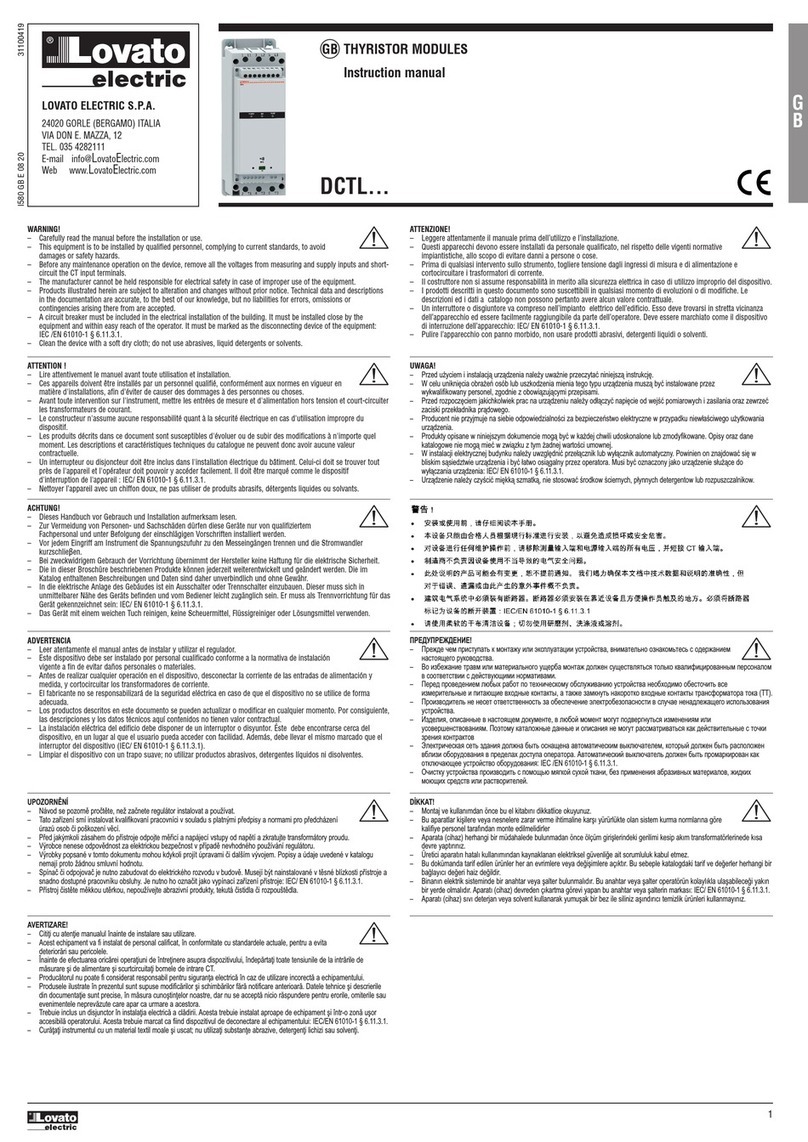
LOVATO ELECTRIC
LOVATO ELECTRIC DCTL Series instruction manual
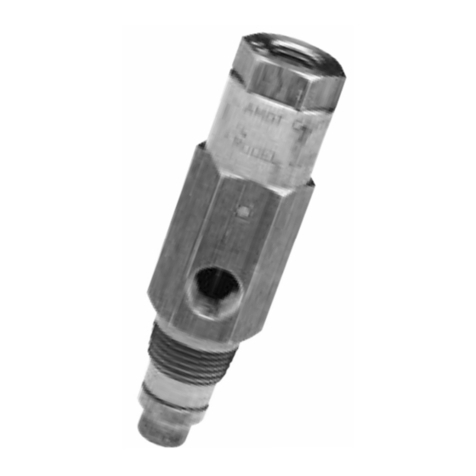
AMOT
AMOT 2230C Installation, operation and maintenance manual
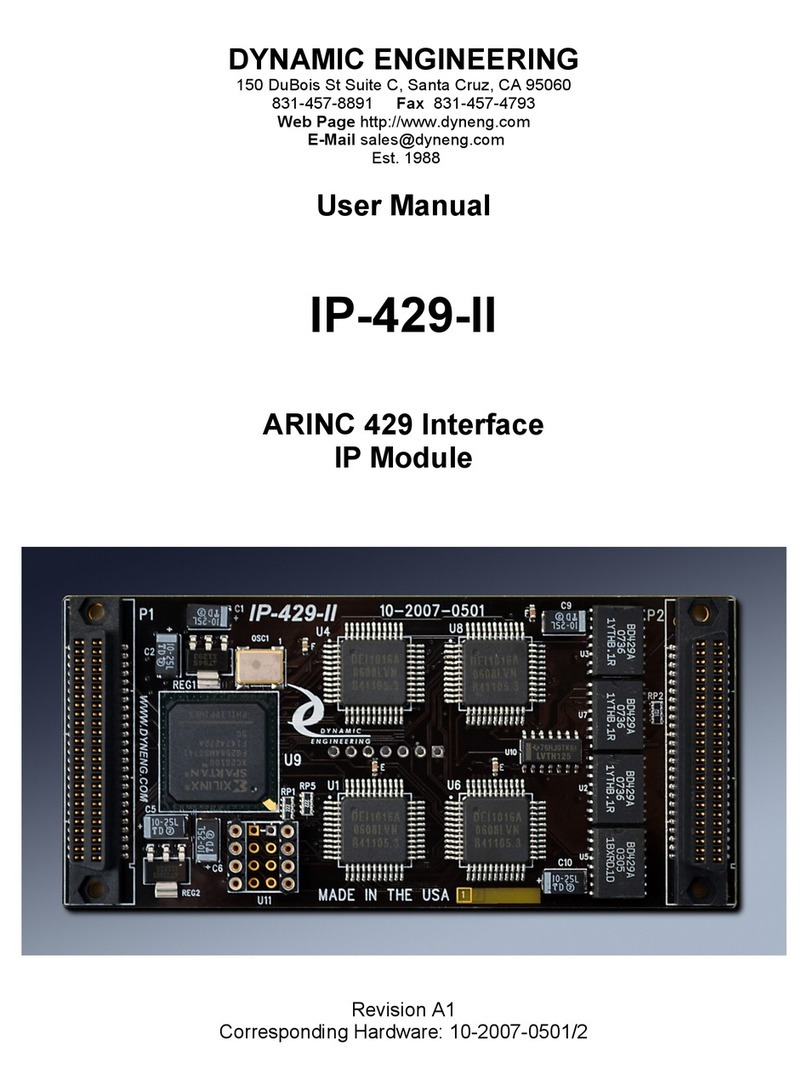
Dynamic Engineering
Dynamic Engineering IP-429-II user manual
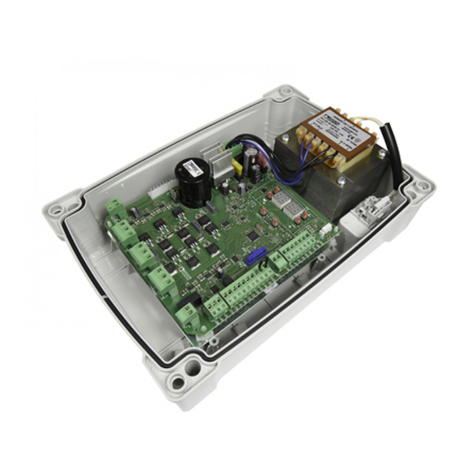
Roger
Roger EDGE1 Series Instruction and warnings for the installer
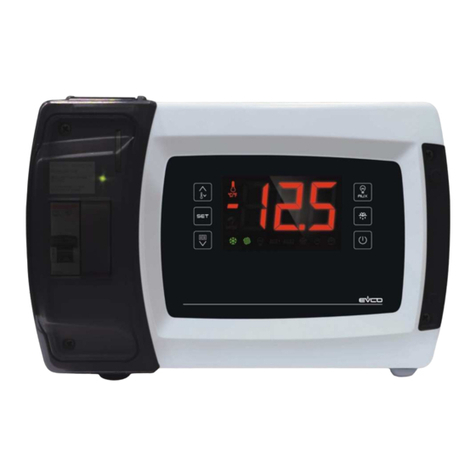
Evco
Evco EVBOX1 EVB1204 installation guide
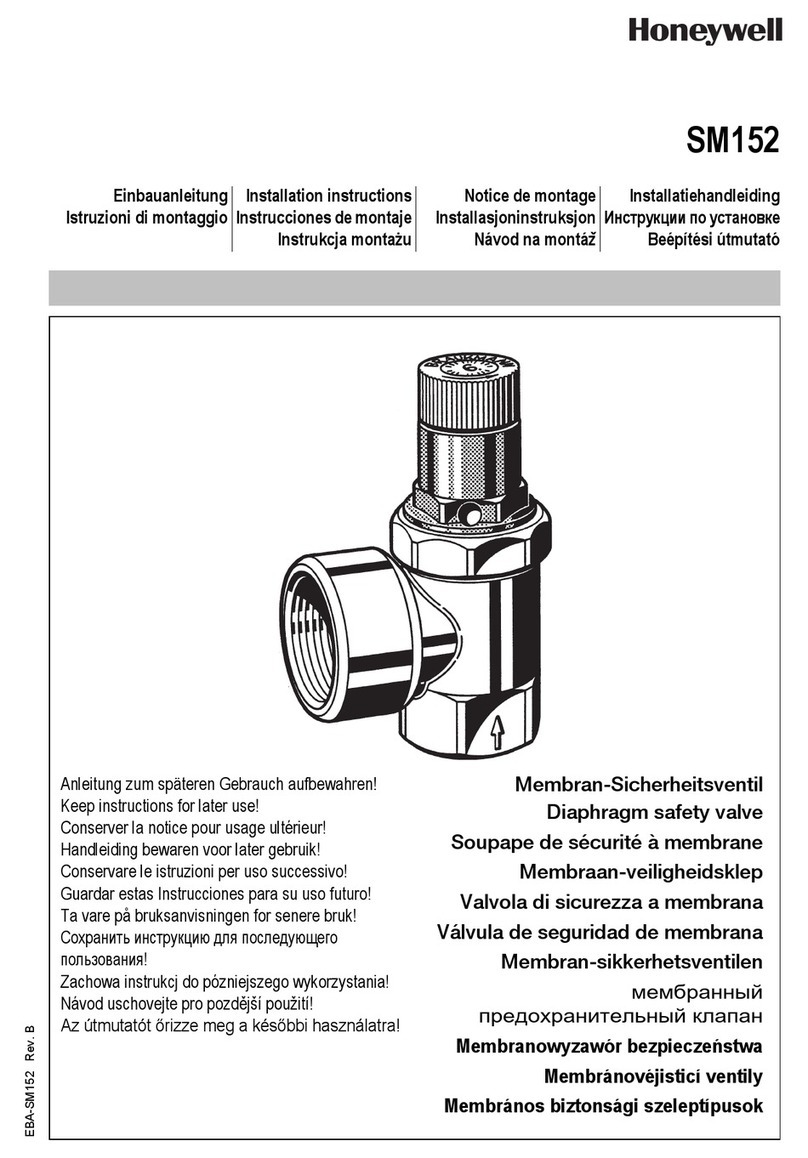
Honeywell
Honeywell SM152 AA Series installation instructions
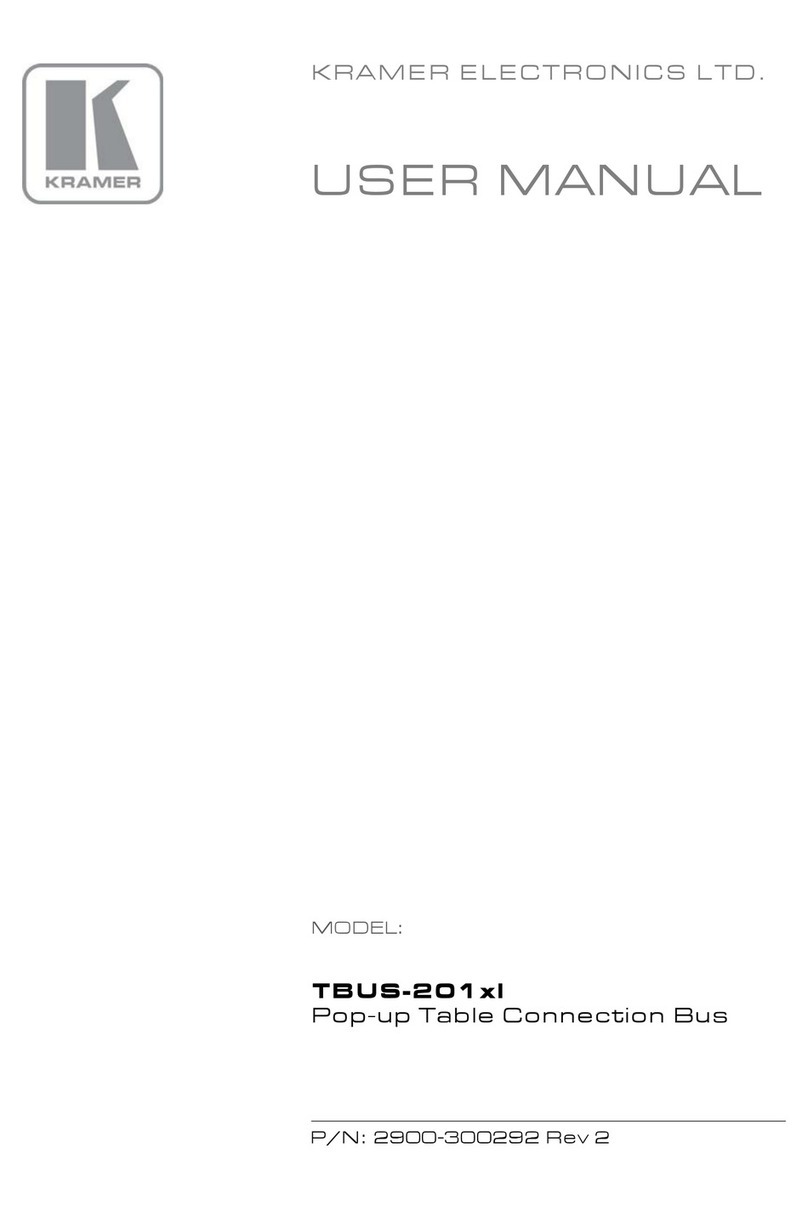
Kramer
Kramer TBUS-201xl user manual
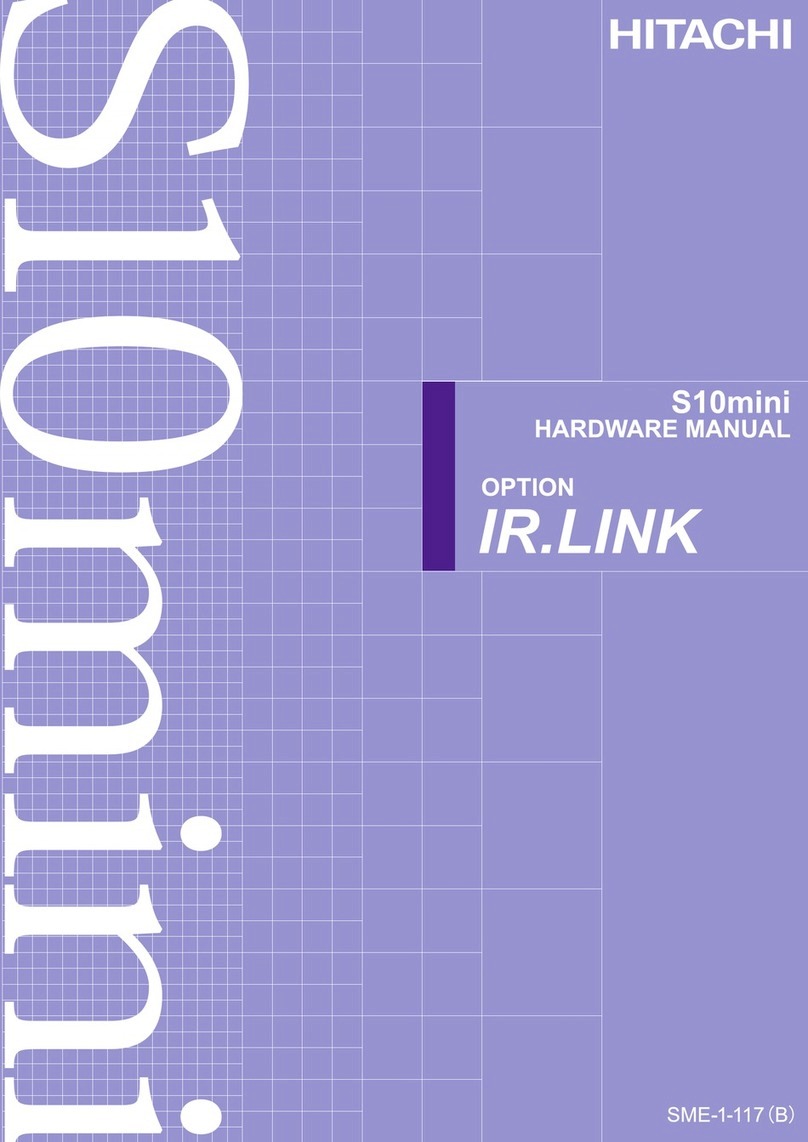
Hitachi
Hitachi S10mini IR.LINK Hardware manual
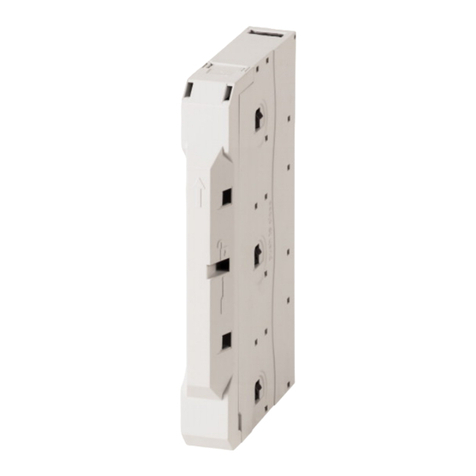
Eaton
Eaton MSFI-80A Instruction leaflet
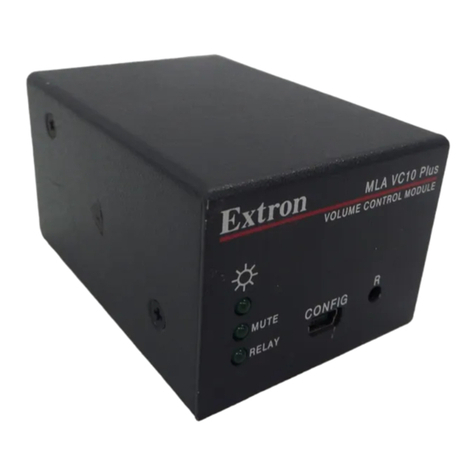
Extron electronics
Extron electronics MLA VC10 Plus Setup guide

BASE Electronics
BASE Electronics LV-8RCL-N Installation and operation manual

Znshine Solar
Znshine Solar ZXM6-HLD144 Mounting manual

